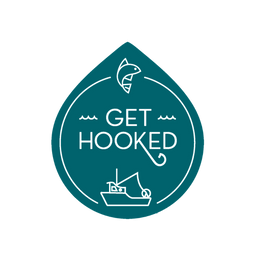Oysters / Bernard Friedman / Ocean Farming
Aug 30, 2022
About Bernard Friedman
Watch this great 4-minute film about Bernard's operation, created by the Santa Barbara Fish Market.
Bernard has been very successful with his shellfish farm, and has working to expand its size. After a 4 year process of getting approvals from a long list of State agencies, he has gotten the green light!
Bernard has been studying and growing mussels for over 15 years. He has made trips to Nicaragua to teach oyster farming and restoration to indigenous women of El Ostional. He has a B.A. in Biology from UC Santa Cruz, an A.S. in Commercial diving technologies from Santa Barbara City College, and a M.Sc. in Fisheries Management, Development, and Conservation from the University of Ireland. Bernard also serves on the board of Commercial Fishermen of Santa Barbara. You can find Bernard’s shellfish at the Saturday Farmer’s Market, the Santa Barbara Fish Market, and many restaurants throughout the region.

Oysters should be live until consumed. Keeping them cold and away from standing fresh water is key to keeping them live.
Shells should be tightly closed. If shells are open or easy to open, they are not live. Let us know if your oysters didn’t stay live and we will comp you!
Store them in their bag, laid flat in the fridge with the larger curved shell side down. The bag should stay sealed with some air in it to keep the humidity up.
How to shuck oysters: watch this quick video. Our friend Chef PA also suggests rinsing and flipping the oyster over before shooting. If you don't have an oyster shucker at home, you can purchase one from us at-cost.
They are very versatile and can be served baked, steamed, grilled, or raw. For wine pairings, stick with crisp whites like Sauvignon Blanc or Sancerre, or a sparkling wine or champagne.

About Oyster Farming
Oyster farming was practiced by the ancient Romans as early as the 1st century BC. These days, Miyagi oysters (aka Japanese oysters or Pacific oysters) are the most widely farmed oysters in the world, since they are easy to grow and adapt to new environments easily.
These marvelous mollusks can EACH clean up to 50 gallons of water a day. In the wild, oyster reefs create habitat for thousands of other sea creatures, many of which, like mussels and clams, also help filter water. Oyster beds shape the bottom of bays so that waves break before crashing on shore, creating protection during storm surges. Because they consume so much algae, they can help stop algae blooms that are harmful to bays and other marine species.
These days, most oysters in the marketplace are farmed.
Oysters are as sustainable as sustainable gets. Farming practices are low impact, and oysters filter and clean our waterways. Seafood Watch includes oysters in "the best of the best" on their Super Green List of seafood recommendations, based on the low level of environmental contaminants and rich health benefits.
Recipes
George recommends having his oysters on the BBQ, grilled with garlic butter, panko, parmesan, cayenne pepper and parsley. Serve with a sliced baguette and cucumber salad for an excellent meal. Using the broiler works well too.
Or try Real Good Fish’s Oysters Rockefeller. This appetizer was created in 1899 and features oysters topped with a mixture of finely chopped greens and copious amounts of butter and then baked in their shells. It was considered so rich that it was named after the richest man of the day, John D. Rockefeller.


